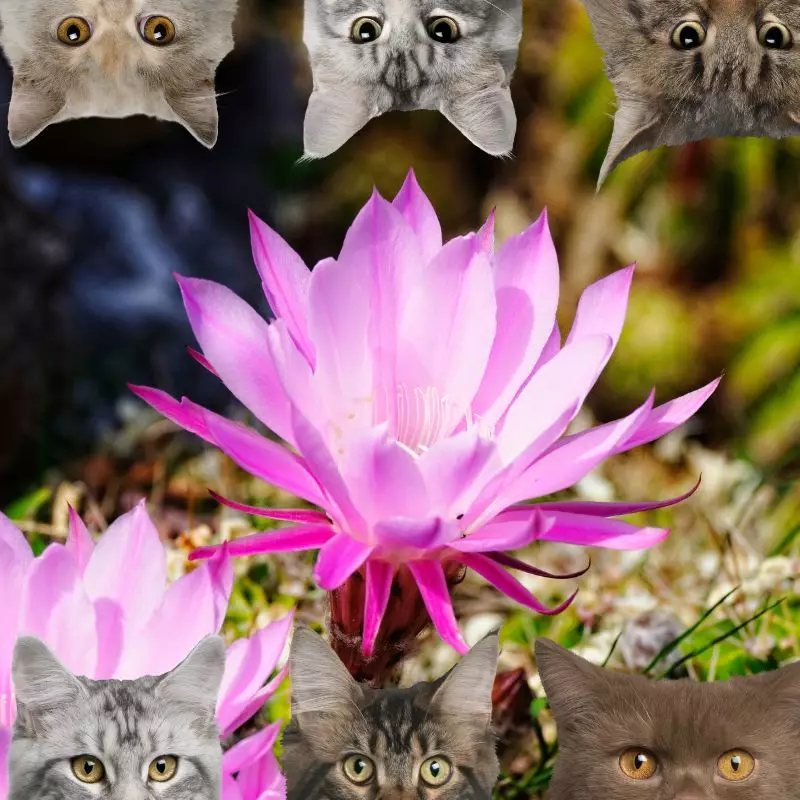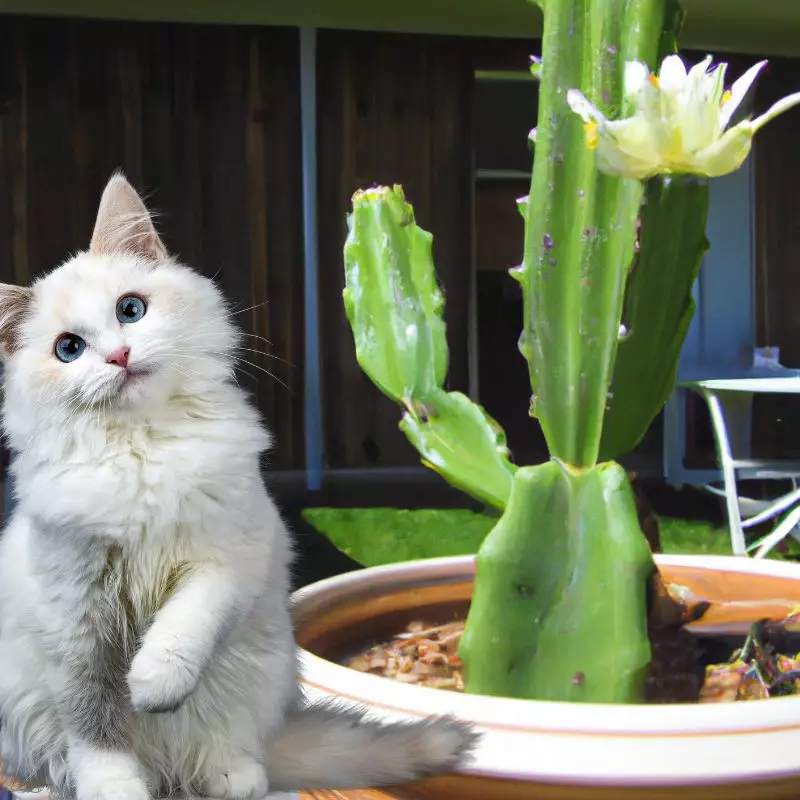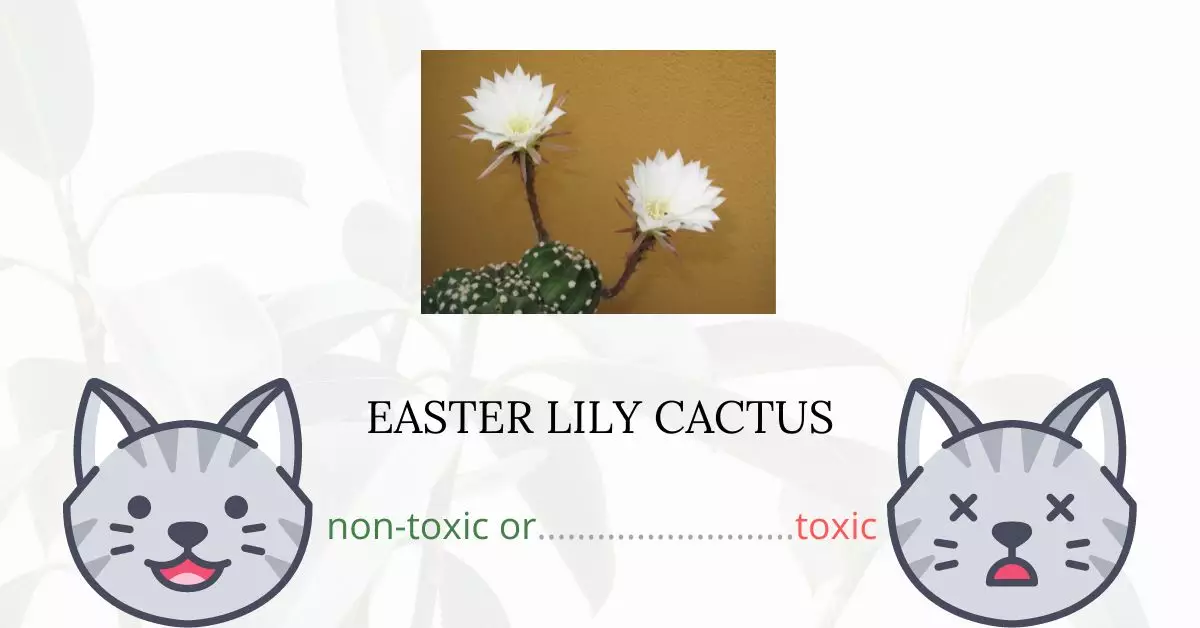Easter Lily Cactus is not toxic to cats.
To ensure the accuracy and reliability of this information, this article has been written in collaboration with a team of experienced DVMs (doctors of veterinary medicine). Their invaluable insights and expertise have guided our research into the potential risks associated with various plants, particularly in this case, the Easter Lily Cactus. Additionally, our findings have been cross-referenced with high-authority websites such as ASPCA and PetMD.
It’s worth noting that, based on information from The American Society for the Prevention of Cruelty to Animals (ASPCA), this flowering plant is also considered safe for dogs and horses.
Can Cats Eat Easter Lily Cactus?

Small amounts may have no effect, while bigger amounts may end up regurgitated beneath the sofa. However, things can get a little more serious if your cat is really young, old, or has pre-existing medical concerns. Even while the plant isn’t hazardous in and of itself, you’ll want to be cautious with any pesticides you use and read the labels carefully, since many of them contain poisonous compounds.
What is Easter Lily Cactus?

Easter Lily Cactus (Echinopsis multiplex) is closely related to Echinopsis oxygona and may be difficult to distinguish from the latter, but the flower tube is more enlarged above and the scales are more distant and large.
These cacti grow quickly and can form large clumps up to 60 cm in diameter. This species blooms from late spring through the end of the summer. On warmer days, the flower lasts only one day in full bloom, opening in the evening and withering the next day. They will stay longer on cool days.
This plant has been frequently crossed with other Echinopsis species, and the number of cultivars appears to be endless. The flowers are beautiful and come in a variety of brilliant colors ranging from magenta to red, orange, and yellow, and are much sought by Cactophiles worldwide.
The Easter Lily cactus is a summer-growing plant that requires no special care. Water regularly in the summer (but not excessively), and keep the soil relatively dry in the winter. In the summer, use a potassium-rich fertilizer. If kept dry, it is frost resistant (hardy to -7° C). In the summer, full sun or half shade is required.
Keeping Cats Away From Easter Lily Cactus

Your cat may get interested in your houseplants due to boredom, curiosity, or playfulness. Providing plenty of enrichment and other toys for your cat can help them avoid using your houseplants as fun. If you have a curious or playful cat, consider placing your cactus somewhere out of reach. “Out of reach” certainly means different things to different cats. When kittens are shimmying up the curtains, the only area “out of reach” is “out of the house,” therefore you’ll need to supply them with something more exciting to play with.
If your cats are frequently digging up your plants’ soil, consider layering river rocks on top of it. You can also use pine cones for this trick. Covering the dirt will keep them from digging while also allowing water to drain.
Plants to Avoid For Your Cats
If you are a cat owner and unsure if the plants growing in your yard are harmful to your cats, check out this list of toxic plants for cats. You can also check our list of non-toxic plants for cats.





